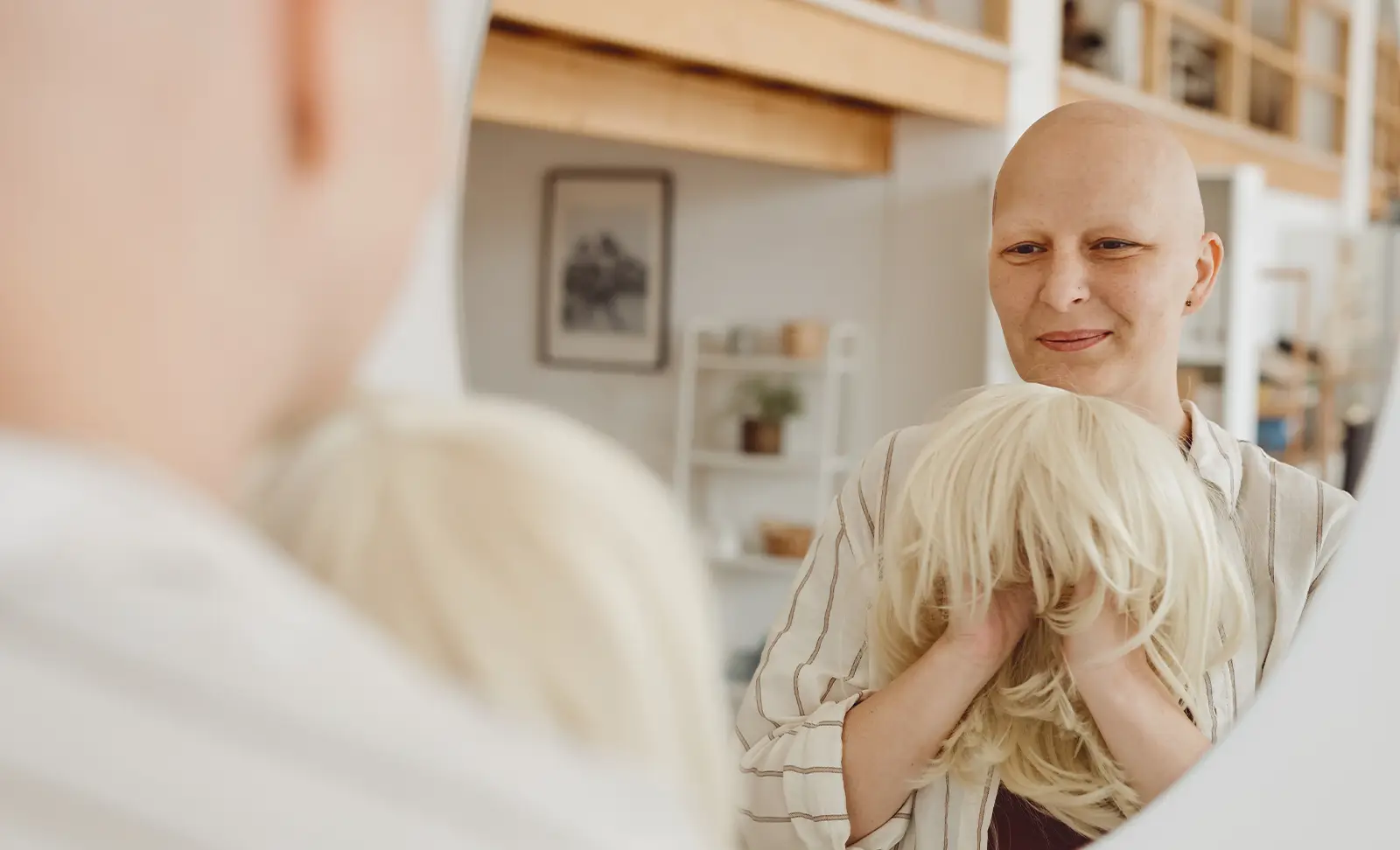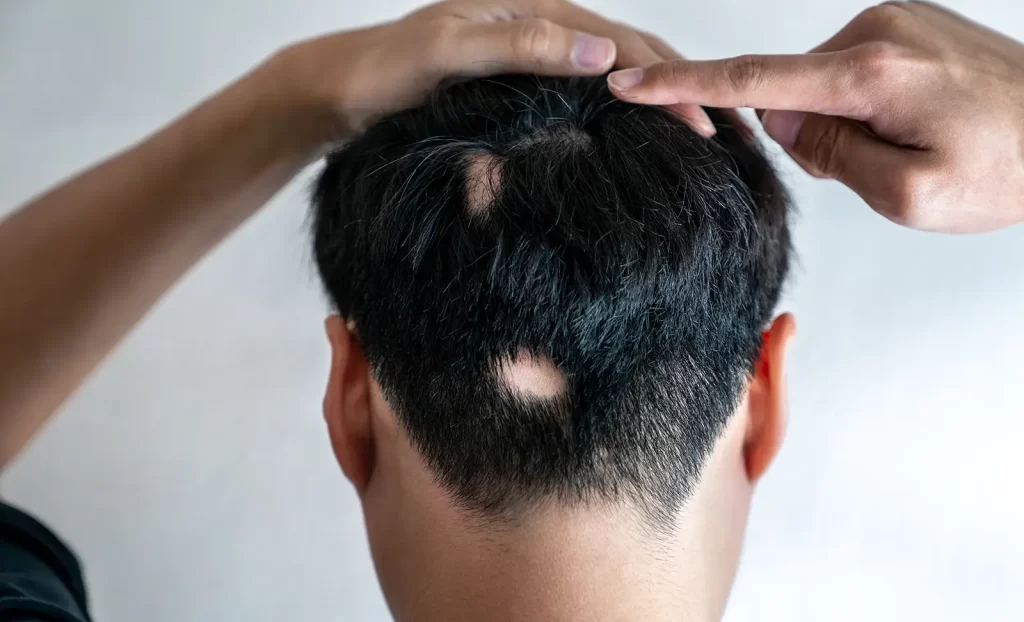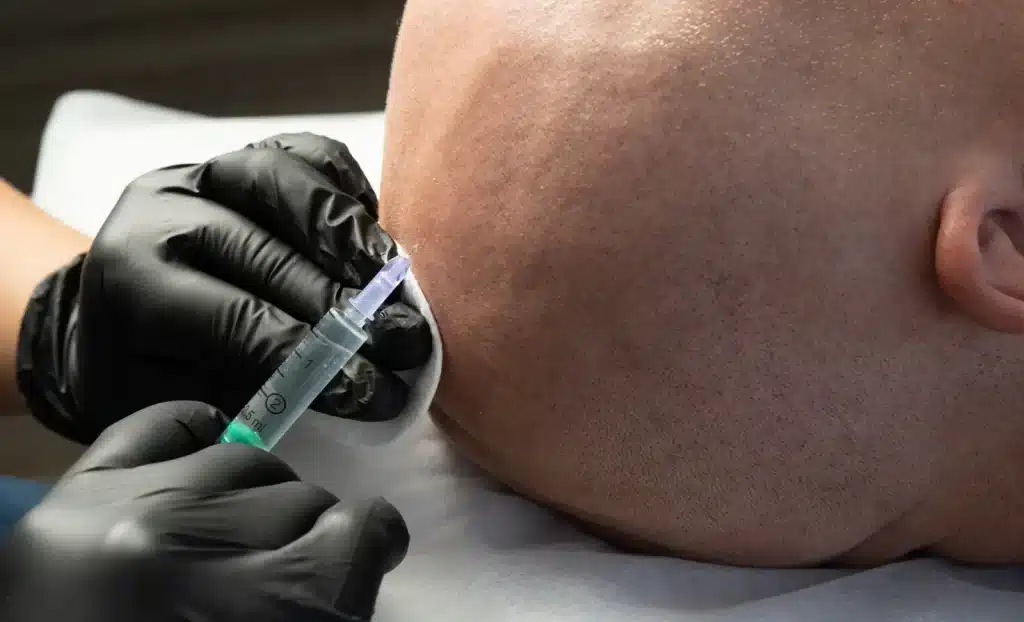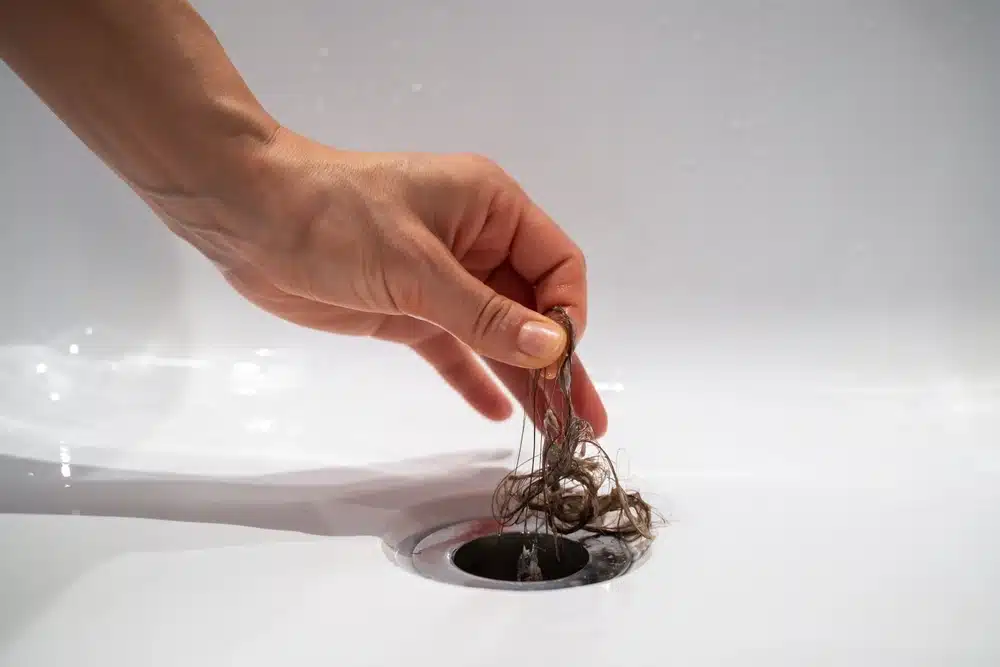Alopecia is an emotionally challenging experience for anyone. Losing hair is never easy, no matter your age. There is a ray of hope, though—while there isn’t exactly a cure for baldness, there are plenty of hair restoration treatments, one of which might work wonders for you.
If you’re in the UK, you might wonder whether you can access alopecia treatments on the NHS. After all, medications and other hair restoration techniques aren’t always cheap. Here, you can learn all about alopecia and whether or not the NHS offers treatment for it.
What is Alopecia?
First, let’s understand what alopecia is. Alopecia is a catch-all term that causes the symptom of losing hair. There isn’t just one type of alopecia – alopecia has many different forms, from alopecia areata to androgenetic alopecia. It can happen to anyone at any age.
Some forms of alopecia are easier to treat than others, some are more common, and some are more likely to reverse on their own. These factors play a massive part in whether you can get treatment on the NHS.
So – Can Alopecia Be Treated on the NHS?
It’s not an easy yes or no answer. Some alopecia treatments can be prescribed on the NHS, whereas others you will need to purchase over the counter.
However, going to your doctor is always the best plan after experiencing alopecia. Even if the NHS cannot prescribe the treatment, you can receive blood tests to understand what exactly is causing your alopecia, and that’s half the journey. By knowing what type of alopecia you have and what’s causing it, you’ll be better equipped when treating it.
The Different Types of Alopecia
Distinguishing which type of alopecia you have is crucial, as each one is very different from the other. For example, one type of alopecia may be caused by lifestyle factors, whereas another might be entirely hereditary. Treatment for alopecia on the NHS would likely differ for each.
Alopecia Areata
Alopecia Areata is likely the one that people most associate with the term alopecia. It’s an autoimmune disease that affects around 15 in 10,000 people in the UK. [1] It can happen at any age, with many cases occurring in childhood. In terms of what it looks like, typical alopecia areata often results in hair coming out in patches, sometimes in coin sized round patches. It doesn’t necessarily only affect the scalp, either – many people with alopecia areata experience hair loss all over the body, including their eyelashes.
Alopecia Totalis
Alopecia totalis causes total hair loss. The scalp loses all of its hair due to problems with the immune system. A lot of research is still being done into alopecia totalis and its causes, though—there is still some mystery surrounding it.
Androgenetic Alopecia
Androgenetic alopecia is one of the most common types of alopecia; in fact, it affects nearly everyone at some point in their lives. There are two types of androgenetic alopecia: male pattern baldness and female pattern baldness. Male pattern baldness is more common and usually results in a thinning crown and a receding hairline. Female pattern baldness is also quite common (especially with age) and usually creates a wider parting and thinner hair overall. Both are hereditary – if you have a mother or father with androgenetic alopecia, you’re more likely to get it yourself.
Diffuse Alopecia Areata (Telogen Effluvium)
Diffuse alopecia areata, commonly known as telogen effluvium, is a type of hair loss that tends to happen after high stress levels. Huge stresses on the body, such as haemorrhaging or surgical trauma, can cause telogen effluvium. [2] The good news is that this type of alopecia usually reverses independently.
Alopecia Universalis
Alopecia universalis is a more uncommon type of hair loss that targets the entire body. You lose hair from the scalp and every other part of the body, such as the underarms, chest, pubic area, and eyebrows.
Ophiasis Alopecia
This one is more likely to occur in children. Ophiasis alopecia targets the back and the sides of the scalp, which is almost the opposite of androgenetic alopecia. This type of alopecia is an autoimmune disease that leads to the destruction of hair follicles. [3] However, it can get better on its own, with some people experiencing total regrowth without treatment.
Traction Alopecia
A physical trigger causes traction alopecia. It’s common in people who wear braids or tight ponytails.
Chemotherapy-Induced Alopecia
As most people are aware, chemotherapy (the cancer treatment) often leads to extreme hair loss. It is known as chemotherapy-induced alopecia. Many patients have a strong likelihood of total regrowth after the treatment.
Alopecia NHS Treatments
As mentioned, some recommended treatments are prescribed by the NHS, while other treatments require a private prescription or can be obtained over the counter. Here are the most common alopecia treatments, from hair transplants to minoxidil.
Steroid Injections
Steroid injections are often used to treat alopecia areata. The treatment involves several rounds of steroid injections being administered directly into the bald area. Usually, you’d get these injections every 4-6 weeks.
Steroid Creams
You can also get steroid creams prescribed for alopecia. Instead of getting injections, you are able to apply the steroid directly to the scalp from the comfort of your own home.
Wigs
Wigs are not an NHS prescription, but they are often recommended by hair clinics and doctors for those suffering from alopecia that doesn’t respond to treatment. You can get both artificial and real wigs, both of which have their benefits.
Light Treatment
Low-level light therapy is a highly effective alopecia treatment offered by private hair clinics. Unfortunately, this treatment is not prescribed by the NHS, but the results are enough to make it worth paying for yourself.
Finasteride and Minoxidil
The most common medications offered for hair loss include finasteride and minoxidil. Finasteride is prescription-only, but you can’t get it on the NHS for hair loss (it’s prescribed for enlarged prostates)- instead, you’d need a private prescription. Minoxidil isn’t available via prescription, but you can get it over the counter at a pharmacy.
Hair Transplants
A hair transplant is arguably the most effective and results-driven treatment for alopecia, as it takes healthy hair follicles and transplants them into the area, the result being natural, healthy hair growth. This is not available on the NHS, but that doesn’t stop many people seeking out its incredible results. Our patients gallery will show you just how effective a FUE hair transplant can be.
A New Alopecia NHS Treatment
There is some more good news! A new treatment from the NHS [4] called ritlecitinib has been shown to result in healthy hair growth. Here’s what Helen Knight had to say about it:
“I’m delighted that we are now able to recommend this innovative treatment, the first time a medicine for severe alopecia areata has been recommended by NICE for use in the NHS.” [4]
If you have alopecia areata, this alopecia NHS treatment might just be the one to help you regrow your hair.
What’s the Best Alopecia NHS Treatment?
It’s hard to say the best hair loss treatment for alopecia, as it depends on the kind of alopecia you have. Everybody responds slightly differently to treatments. For one person, a steroid cream may be enough to regrow their hair; for others, nothing seems to work, and wigs may be the best answer.
If you have alopecia and you’re not sure which treatment is best for you, speak to your doctor. They’ll be able to help you come up with a treatment plan.
What About Alopecia NHS Emotional Help?
Alopecia doesn’t just cause physical hair loss; it can also cause emotional distress in patients. Losing your hair is never easy, and it can be particularly difficult if it happens when you’re still young or suddenly.
In this situation, you can seek emotional help through the NHS to deal with your alopecia. Speak to your doctor about starting counselling or joining a support group. Something as simple as speaking to people who have been through something similar to you can be enough to help you emotionally handle alopecia. Remember, you’re not alone.
Alopecia Treatment NHS: In Summary
Losing your hair is never easy. It can affect your confidence, leading to emotional problems and poor mental health. You don’t have to put up with it. You can use the alopecia NHS services to diagnose the problem; your doctor will likely run some blood tests to see the root cause of your alopecia. Once a diagnosis has been made, you’ll either need to seek treatment over the counter, privately, or, in some cases, through an NHS prescription.
If you’re looking for the next step in your hair restoration journey, the Harley Street Hair Clinic team can help. We offer high-quality hair transplants at our clinic, creating a tailored hair restoration plan to suit you. If you want a no-obligation consultation with one of our top surgeons, get in touch or download our hair track app today.
Sources:
- https://www.alopecia.org.uk/blog/epic-epidemiology-study-for-alopecia-areata
- https://www.ncbi.nlm.nih.gov/pmc/articles/PMC7320655/#:~:text=Increased%20physiological%20stress%20such%20as,months%20after%20childbirth%20%5B12%5D.
- https://www.ncbi.nlm.nih.gov/pmc/articles/PMC7340463/#:~:text=Alopecia%20areata%20(AA)%20is%20a,parietal%20regions%20of%20the%20scalp.
- https://www.nice.org.uk/news/article/up-to-14-000-people-could-benefit-from-the-first-treatment-for-severe-alopecia-recommended-by-nice#:~:text=%E2%80%9COur%20committee%20heard%20how%20s,for%20use%20in%20the%20NHS.




